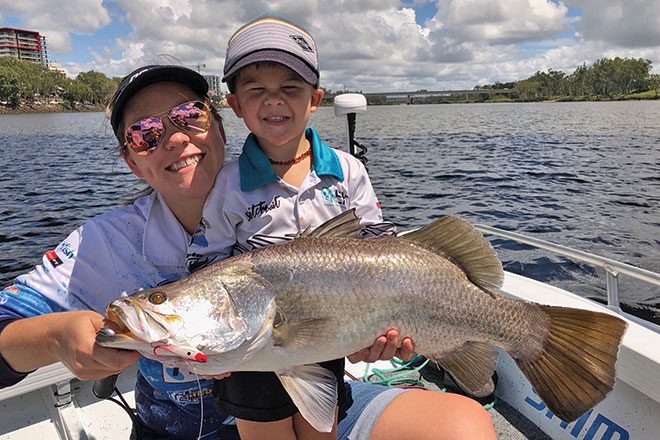In the previous issue, we started a discussion on using soft vibes.
We discussed terminal tackle, types of soft vibes and fine tuning.
This month, we’ll be looking into the more technical side of catching fish on soft vibration lures.
The first topic I would like to cover is retrieves.
There are so many ways you can work a soft vibe, so which one is correct?
The very obvious and simple answer is… whichever retrieve gets the bite.
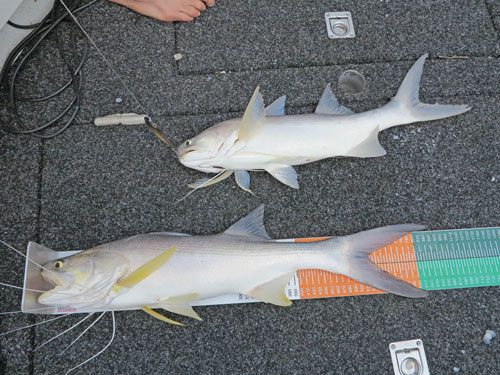
For anyone new to using these types of lures, the easiest way to use soft vibes is the old-fashioned lift and drop.
Cast the lure out and let it hit the bottom – if the fish are hard to the bottom or within 1m or so – then use a nice slow long lift and again let the lure fall back to the bottom.
It is very important to wind the slack up when the lure is falling and to remain focused watching the line.
Nine times out of 10, the fish will hit it on the drop, so you want everything in your favour.
If you’ve got too much slack line out, you won’t be able to set the hook and see those subtle taps on the lure through your line.
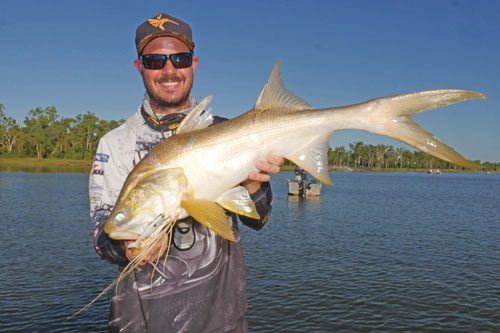
My absolute favourite retrieve consists of short sharp hops across the bottom.
It was explained to me as similar to a prawn skipping across the seabed.
And you can change it up by doing a few short hops followed by a long hop.
It always pays to experiment.
Body position is also critical.
Your body should be square to the direction you’re casting, and the rod should be pointing at the lure.
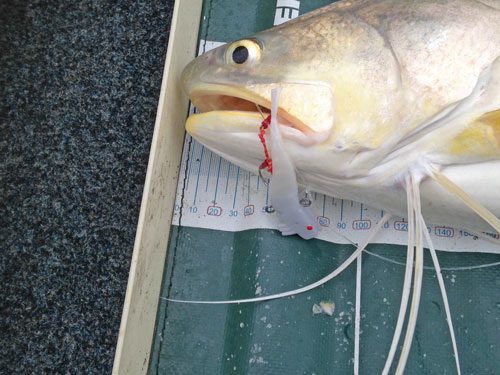
It’s very hard to remain focused and concentrate for the entire session but I can assure you that if you can do this well, you’ll put more fish on the deck.
There’s nothing more frustrating than getting only one or two bites for the day and being off with the fairies.
When you do receive a bite, it’s very important to strike hard and wind slack at the same time.
It might take a while to perfect the technique because the coordination might not be there in the early stages of learning.
The reason you do this is to get a good hook set.
Fish such as barramundi can clamp a lure in the front of their mouth without being hooked, so if you don’t get a good hook set, the fish can simply open its mouth and spit it out.
Yes, it does happen, even when the lure is covered in prickles.
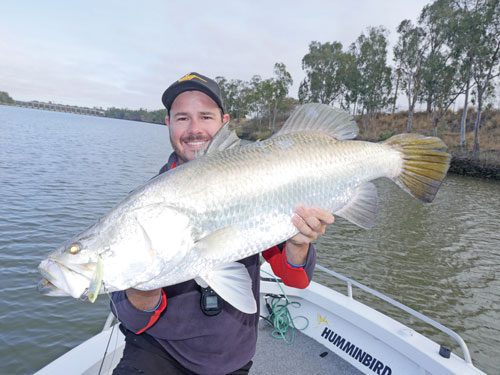
The reason for winding hard is for hook set but the other important factor is to maintain tension with the lure – to keep it in place.
The first thing a fish will do when you pin it with a lure is shake its head.
Constant tension will make it harder for the lure to come free.
Some species – as an example, king threadfin – have a knack of swimming at the boat once hooked.
Most fish when hooked will swim away from the tension created rather than towards it.
If you’re not onto it, then a fish swimming towards the boat will gather slack line very quickly and spit the lure out.
I know there’s a lot to consider when using this technique but it’s like any new skill – it takes time to develop and refine.
Always look at what you’ve done well for the trip and what needs improving.

I guarantee that given time on the water, you’ll be a confident and efficient fisho.
If different retrieves aren’t getting a result, it may be time to switch vibes.
When changing, always observe which lure you’re using and why.
Always think about what’s not working and what you’re going to tie on next.
Obvious changes are vibe size and weight – different colours and contrast make a big difference too.
Going from a heavy vibration, such as a Nomad Vertrex Max, back to a subtle vibration, as per the Jackall Transam, can make a difference.
When the fish are a bit finicky, I believe that heavy vibration will deter them.
Another factor to consider when changing colours is the presence of ultra-violet active colours.
It’s not something most people are aware of, though it’s a 1 percent that can make a difference.
I’ve seen it plenty of times when you’re using say a very natural colour in clear water, which sounds logical.
The fish will swim around it, even though it might be imitating the baitfish that are present.
Clip on a Zerek Fish Trap in Flying Bear and it gets eaten straight away.
The Flying Bear colour has a UV active red head.
That’s it for insights into using soft vibration lures.
I hope you’ll be able to benefit from something in this article.
I’ll be back next month with a full report on what’s been happening on the Capricorn Coast.
 Bush ‘n Beach Fishing Magazine Location reports & tips for fishing, boating, camping, kayaking, 4WDing in Queensland and Northern NSW
Bush ‘n Beach Fishing Magazine Location reports & tips for fishing, boating, camping, kayaking, 4WDing in Queensland and Northern NSW

